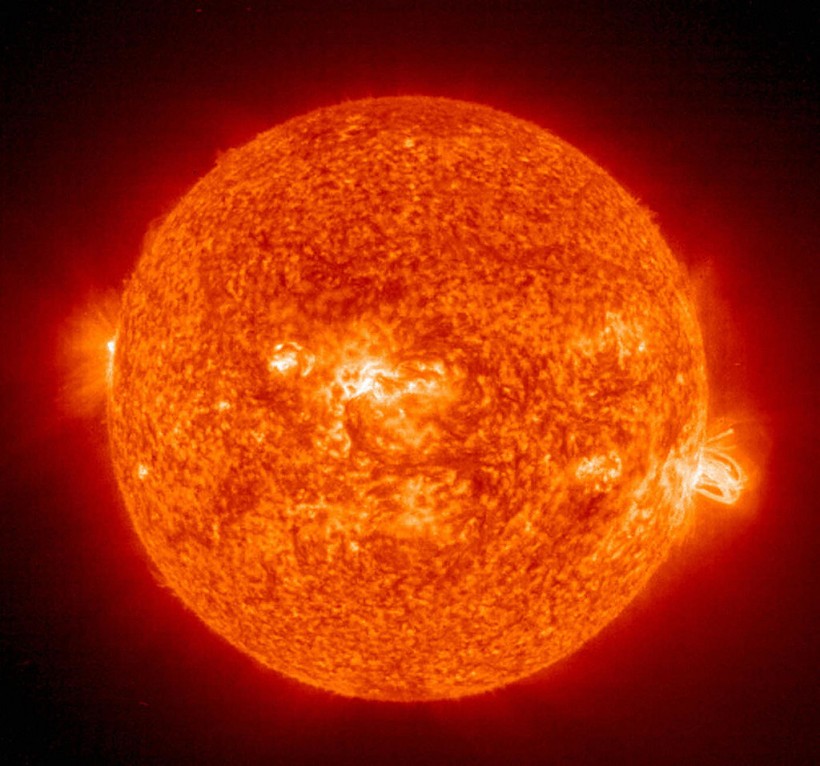A powerful solar flare was released from the Sun earlier this week, and it came from a new sunspot.
Although the flare is not expected to affect humans on the ground, it can disrupt Earth's radio and satellite technology due to the triggered solar storm in the form of a geomagnetic storm and radio blackout.
New Solar Storm

The Sun released an X1.1-class solar flare at 9:25 a.m. EDT (local time) on Tuesday, May 3, the second flare of such magnitude produced by our solar system's star this week.
The space weather event was recorded by the Solar Dynamics Observatory of the National Aeronautics and Space Administration (NASA), as cited by Live Science.
Although the X1 solar flare was immense, it fired off not in the direction of Earth and occurred in the lower left limb of the Sun.
As a result, aurora borealis or northern lights are reportedly unlikely to occur in the northern hemisphere of the Earth this time.
Also Read: Can a Solar Flare Be Powerful Enough to Wipe Out All Life on Earth?
Geomagnetic Storm and Radio Blackout
Despite the said trajectory of the X1 flare, the National Oceanic and Atmospheric Administration (NOAA) - Space Weather Prediction Center (SWPC) mentioned a strong radio blackout may put high frequency (HF) communication to contact loss over the Atlantic Ocean and Europe, as well as some eastern South America and western Africa.
There were no immediate reports if low frequency (LF) communications will be affected by the radio blackout.
Meanwhile, a geomagnetic storm may still affect the Earth's magnetosphere, disrupting signals of electronic devices, equipment, and various platforms reliant on satellite communication and technology such as:
- Mobile phone
- Telephone
- Television
- Internet
- Global position system (GPS)
In addition, GPS navigation and digital communications of aircraft and spacecraft can also be affected by the magnetic storm.
On the other hand, the NOAA - SWPC also indicated the risk of these solar storms, including a weak solar radiation, from Thursday to Saturday, May 5 to May 7.
X-Class Flares
The recent solar explosion belongs to the "X-class flares" category, a set of measurements used to determine the intensity of such solar eruptions.
X-class solar flares are considered to be the strongest types of solar storms produced by our Sun.
Although a geomagnetic storm, solar radiation storm, and radio blackout are the solar particles that usually affect Earth, solar flares along with coronal mass ejections (CMEs), are the immediate solar phenomenon following a solar storm.
With an emphasis on solar flares, these giant explosions resemble linear or curve-like waves of light and high-speed particles into space, as per NASA.
Unlike flares, a CME solar explosion is more scattered; nevertheless, both can release the three solar hazards that disrupt our planet's radio frequencies and satellite signals.
Solar Cycle 25
Solar storms are part of our star's solar activities which are currently on Solar Cycle 25 since recordings started in 1775.
The current 11-year solar cycle started in December 2019 and has been predicted to peak in 2025.
During this period, solar eruptions may either decrease or increase depending on the movement of magnetic field lines in the Sun.
The strongest solar flare in recent history was recorded in 2003, with modern methods and sensors registered as an X28-class.
Related Article: Solar Storm: Radio Blackouts Reported in Southeast Asia and Australia as Massive Solar Flare Explodes During Easter Weekend
© 2024 NatureWorldNews.com All rights reserved. Do not reproduce without permission.

![Tsunami Hazard Zones: New US Map Shows Places at Risk of Flooding and Tsunamis Amid Rising Sea Levels [NOAA]](https://1471793142.rsc.cdn77.org/data/thumbs/full/70325/280/157/50/40/tsunami-hazard-zones-new-us-map-shows-places-at-risk-of-flooding-and-tsunamis-amid-rising-sea-levels-noaa.jpg)



